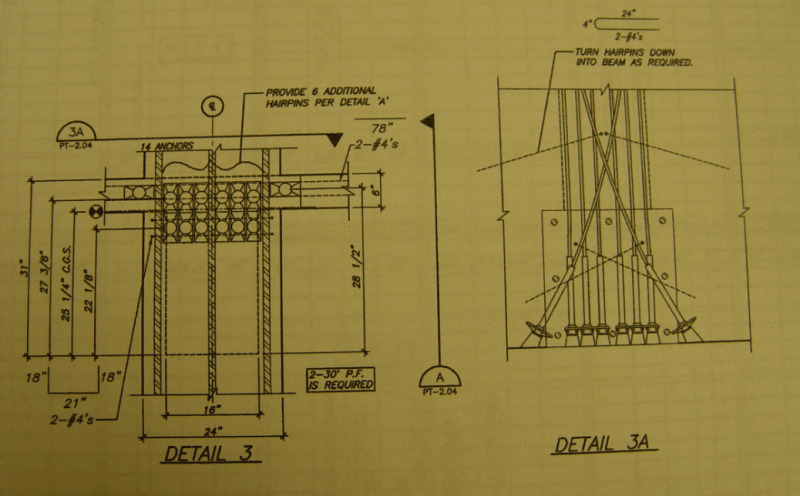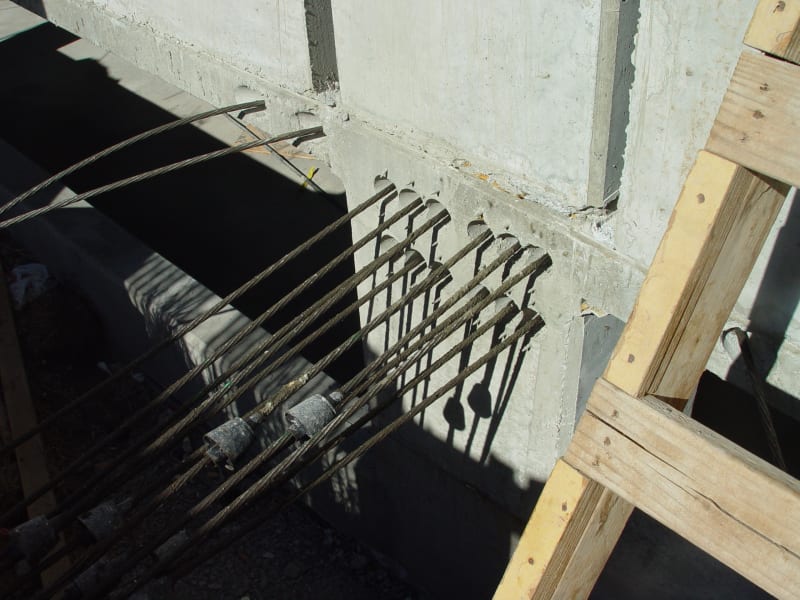I have a parking garage beam/slab system i am designed. Beam span is about 56'. 7" thick slab, beam dimensions are 24" wide x 32" deep. My preliminary design shows i need 27, .5" diam tendons.
Question is about about the end anchorage. I have read that it is preferred to have the anchorage at the CGS of the beam. Doing this is about 13.3" from the top of the beam. Problem I am running into is based on the anchor size (5"x2.25"), i cant fit the anchors within the reinforcing stirrups of the beam and have the centroid of the anchor group at the CGS of the beam.
I have seen some example plans that would seem to have this issue, however they dont show a size of the tendon, just an effective force. Does the PT supplier just "work this issue out" and figure out how to make it work? I guess going to a 0.6" tendon could be an option, with less anchors, but again, is this the option of the PT supplier? I was using a monostrand unbonded system.
Question is about about the end anchorage. I have read that it is preferred to have the anchorage at the CGS of the beam. Doing this is about 13.3" from the top of the beam. Problem I am running into is based on the anchor size (5"x2.25"), i cant fit the anchors within the reinforcing stirrups of the beam and have the centroid of the anchor group at the CGS of the beam.
I have seen some example plans that would seem to have this issue, however they dont show a size of the tendon, just an effective force. Does the PT supplier just "work this issue out" and figure out how to make it work? I guess going to a 0.6" tendon could be an option, with less anchors, but again, is this the option of the PT supplier? I was using a monostrand unbonded system.


